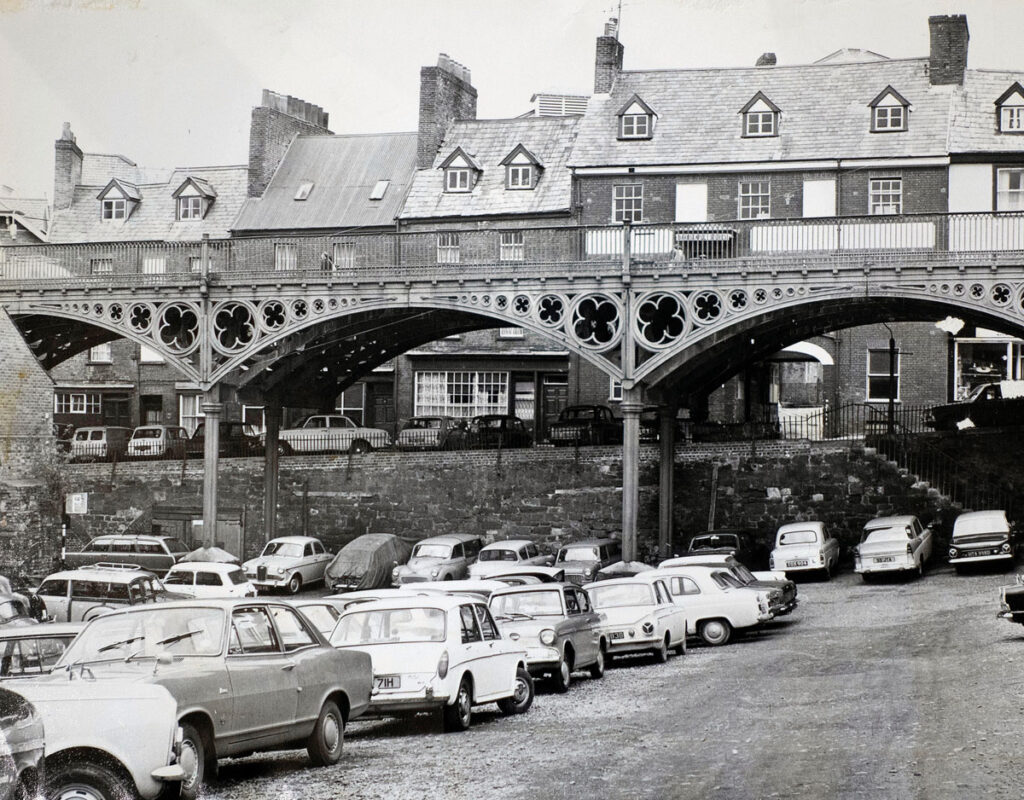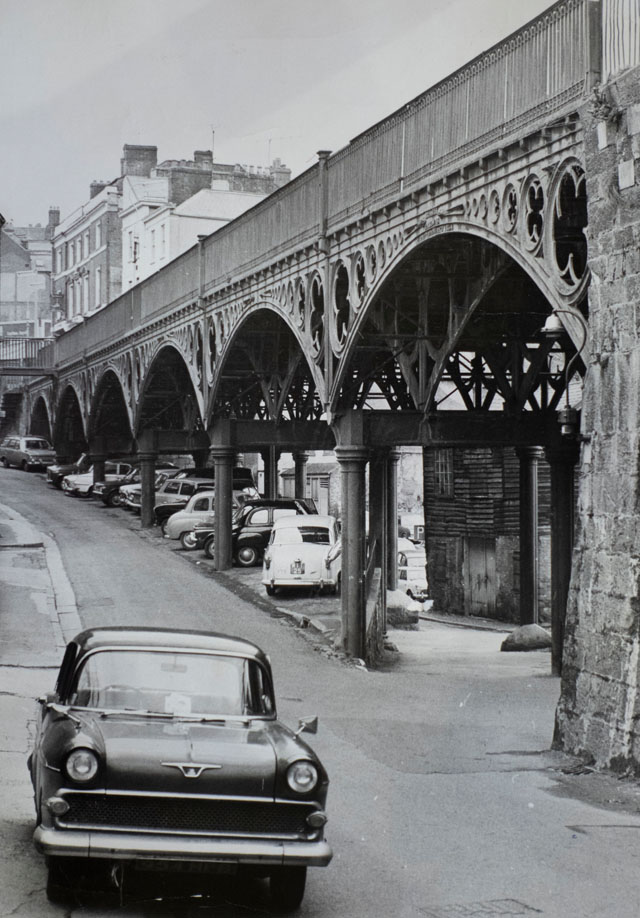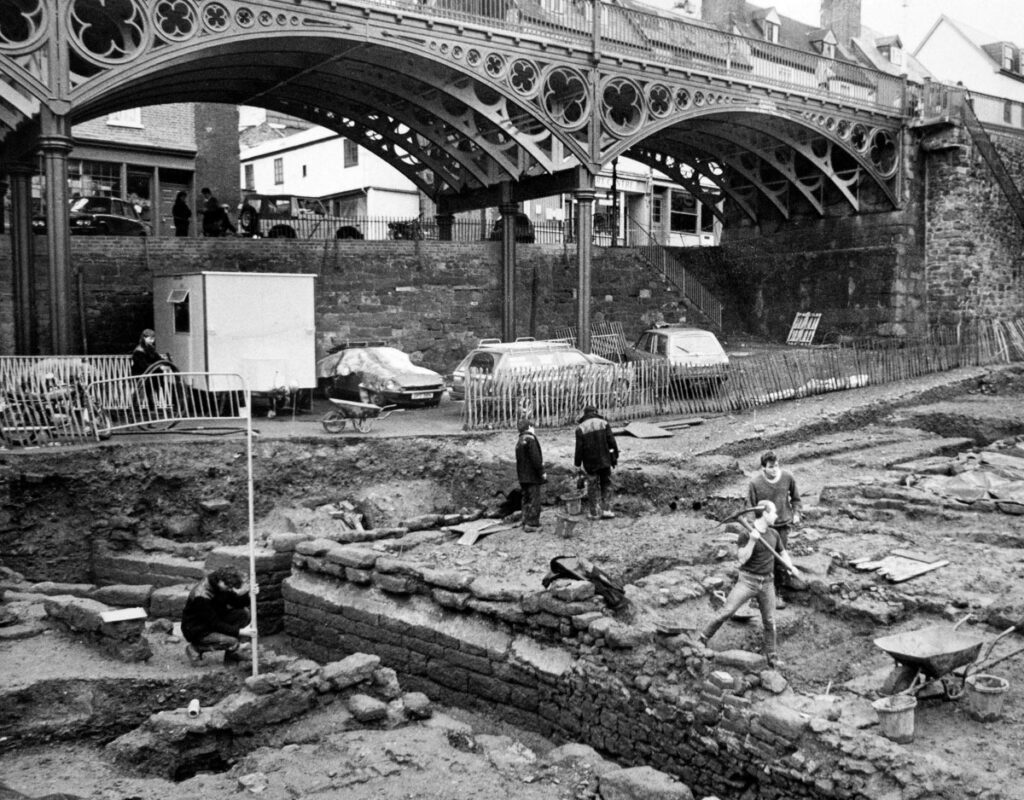Community researcher, Robert Coram
For centuries traffic from Exeter ran down North Street, through the North Gate and into the deep-sided Longbrook Valley, known as The Pit due to its steep sides and depth. The Iron Bridge was constructed as a means of crossing this valley and replacing the narrow road which was particularly difficult for horse-drawn vehicles.
It was commissioned by the Improvement Commissioners, a body formed around 1810 to ensure a more rational approach to town planning in Exeter, a forerunner to our Town and County Planners.
A resolution at a meeting in May 1834 was passed to proceed the construction of a bridge, parallel to and on the left side of Lower North Street. It so happened that the design blocked two of the lower floors of The Crown and Sceptre and thus the only future use of these floors would be as if they were cellars.
The construction also impacted upon an inn located on the other side of the road from the Crown and Sceptre. It was known as The Barnstaple Inn and later became part of St Anne’s Well Brewery.
There were differing opinions as to whether a cast iron or suspension bridge, echoing the one in Bristol, would be built. The former prevailed and the bridge was cast from 1834 to 1835 at the iron works of Russell and Brown of Blaina, Monmouthshire. It cost £3,500. The width was eventually settled at 26 feet as a result of a declaration made to the Trustees of the Exeter Turnpikes by the Commissioners. The cast iron shafted piers support joists, from which spring six rows of arched guiders of traceried spandrels and Gothic cast iron balustrades, on which the road is carried. This gave a road length of eight hundred feet.
The cast iron parts were brought by sea from Newport, along the Exeter Ship Canal and unloaded at the canal basin. The cost of the construction rose from £6,500 and by 1836 the accounts totalled £10,461 14s 8d, including the cost of ancillary works and compensation for land compulsorily acquired. The funding came from the Commissioners and the Exeter Turnpike Trust. The Commissioners then noted ‘the excellence of both the materials and works which have been executed … and the highly honourable manner in which the whole business has been conducted’.
The new bridge made it easier for travellers, either by foot or by driven vehicles, to access or leave the City. A flight of steps led from each side of the bridge to the road/ground below. The doors of the Crown and Sceptre became wide enough to take the six-horse coaches from Barnstaple.
A cast iron post, at the top of which is a weather vane, is located at the end of the bridge nearest to the St Anne’s Well Brewery and is over forty feet in height. It was installed in 1898 to celebrate Queen Victoria’s Diamond Jubilee. Whether the positioning was influenced by the construction of the then relatively new bridge is a matter for conjecture.
The responsibility for the maintenance of the bridge being formerly with the Exeter City Council, is now the responsibility of the Devon County Council, for the whole structure, including the ironwork.


